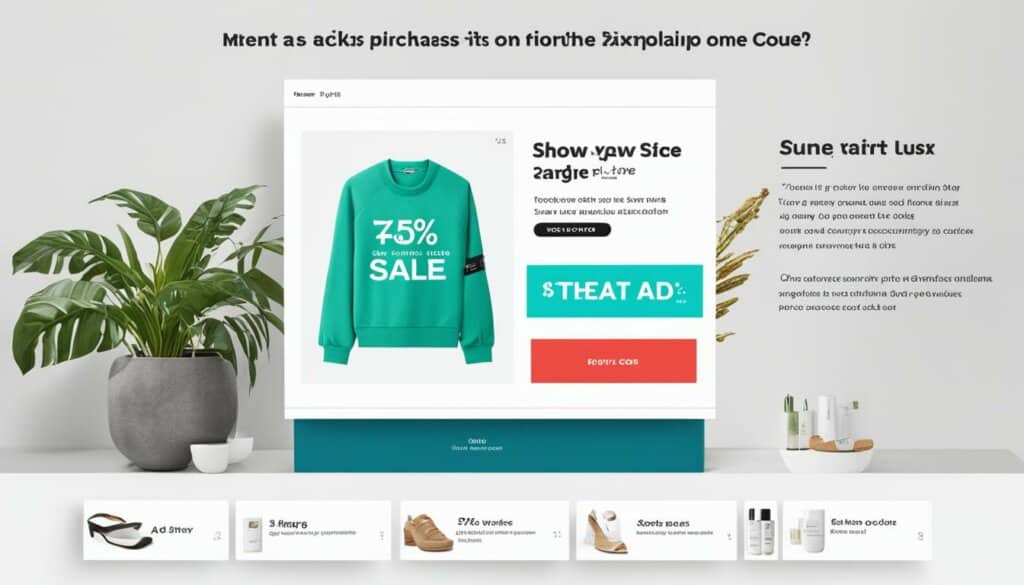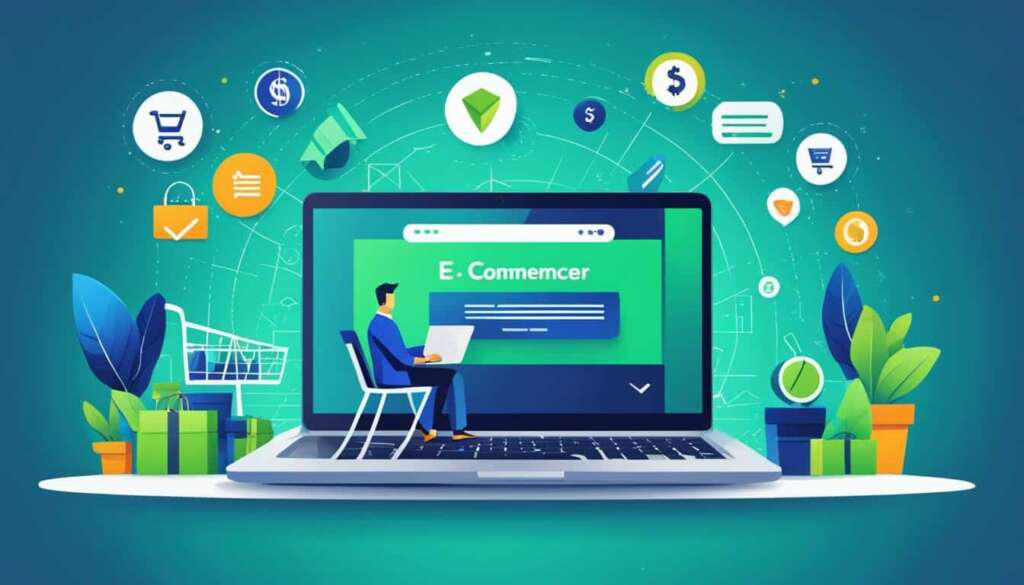Table of Contents
Ecommerce revenue has been steadily increasing year over year, reaching over $100 million and is predicted to surpass $1 trillion by 2024 in the United Kingdom alone. To carve out a larger slice for your brand, it is important to stay up to speed with evolving trends in the ecommerce landscape. This article will provide top tips for e-commerce marketing strategies that can boost visibility and increase sales.
Implementing effective e-commerce marketing strategies is crucial for boosting visibility and increasing sales in the competitive online marketplace. By leveraging the right strategies, you can reach your target audience, drive traffic to your website, and convert visitors into loyal customers.
The first step in an effective e-commerce marketing strategy is to boost visibility. To maximize your online presence and attract potential customers, it is important to optimize your website and product pages for relevant keywords and phrases related to your industry and target audience. Conduct thorough keyword research to identify the terms and phrases that your potential customers are searching for, and incorporate them strategically into your website content, meta tags, and product descriptions.
In addition to optimizing your website for search engines, it is important to utilize other marketing channels to expand your reach. Social media platforms such as Facebook, Instagram, and Twitter can be powerful tools for promoting your products and reaching a wider audience. Consider running targeted advertising campaigns on these platforms to increase visibility and drive traffic to your website.
Another effective e-commerce marketing strategy is to focus on increasing sales. One way to achieve this is by offering special promotions and discounts to incentivize customers to make a purchase. Limited-time offers, free shipping, and exclusive discounts can create a sense of urgency and encourage customers to take action. Additionally, implementing upselling and cross-selling strategies can help increase the average order value and maximize revenue per customer.
Personalization is another key element of a successful e-commerce marketing strategy. By delivering personalized recommendations, tailored offers, and relevant content to your customers, you can enhance their shopping experience and increase the likelihood of conversion. Utilize customer data and analytics to segment your audience and deliver targeted messages that resonate with their specific needs and preferences.
Lastly, don’t underestimate the power of customer reviews and testimonials. Positive reviews can build trust and credibility for your brand, while negative reviews can provide valuable feedback for improvement. Encourage satisfied customers to leave reviews and showcase them prominently on your website and product pages. Additionally, consider leveraging user-generated content, such as customer photos and videos, to create genuine and engaging marketing materials that resonate with your target audience.
Implementing these top e-commerce marketing strategies can help elevate your sales, boost visibility, and increase revenue for your online business. Stay tuned for the next section where we will explore how to leverage social commerce features to drive sales.
Leverage Social Commerce Features to Drive Sales
Social commerce is a growing trend that offers tremendous opportunities for brands to increase their sales and reach a wider audience. With millions of active social media users taking advantage of social commerce features, it has become crucial for businesses to tap into this market to stay competitive.
In 2022, approximately 97 million social media users utilized social commerce features, and this number is expected to rise to about 144 million by 2025. This significant increase showcases the immense potential of social commerce in driving sales and attracting customers.
One platform that has emerged as a key player in the social commerce space is TikTok. Known for its short-form video content, TikTok has gained a substantial market share and has become a hotbed for influencer marketing. By partnering with popular TikTok creators, brands can leverage their influence and promote their products or services to a vast audience. This not only increases brand visibility but also boosts sales and conversions.
Another exciting development in social commerce is the integration of virtual reality (VR) and augmented reality (AR) technologies. These immersive technologies open up new avenues for marketers to provide unique and interactive customer experiences. By allowing users to visualize products in a virtual environment or try them on digitally through AR, brands can enhance the shopping experience and entice customers to make in-app purchases.
Virtual reality and augmented reality technologies are transforming the way consumers interact with brands. By providing immersive experiences, businesses can build a stronger connection with their audience and drive sales.”
To stay ahead in the social commerce game, brands need to stay updated on the latest social commerce features and incorporate them into their e-commerce marketing strategy. This includes exploring influencer collaborations, embracing VR and AR technologies, and optimizing their social media presence to facilitate seamless in-app purchases.
| Social Commerce Features | Benefits |
|---|---|
| Influencer collaborations | Expands brand reach and drives conversions through trusted influencers. |
| Virtual Reality (VR) | Enhances customer experiences and increases product engagement. |
| Augmented Reality (AR) | Allows customers to visualize products and try them on digitally, boosting confidence in purchase decisions. |
| In-app purchases | Facilitates seamless transactions within social media platforms, eliminating friction and driving immediate sales. |
By leveraging social commerce features, brands can tap into the massive potential of social media users and boost their sales and revenue. It is essential for businesses to embrace these trends and adapt their e-commerce marketing strategies accordingly to stay competitive in the evolving digital landscape.
Retargeting and Personalization for Increased Conversions
Retargeting is a powerful strategy that allows brands to convert interested consumers into customers. By specifically targeting individuals who have shown interest in their products or services, such as those who have left items in their shopping carts or have made previous purchases, brands can personalize their marketing efforts and significantly increase the likelihood of conversions.
Studies have shown that approximately 83% of consumers are willing to share personal details in exchange for a personalized shopping experience. This highlights the importance of delivering tailored content that resonates with individual preferences and needs.
One effective way to implement retargeting is through automated email sequences. By segmenting email lists based on consumer behavior and interests, brands can deliver targeted messages at the right time, improving the chances of engagement and conversion. For example, sending a friendly reminder with special offers to individuals who have abandoned their shopping carts can entice them to complete their purchase.
Personalization goes beyond email segmentation. Brands can take their efforts further by sending emails from a person within the organization instead of a generic email address. This creates a more personal touch and increases the likelihood of building a connection with the recipient.
Example:
“Hi [First Name],
I noticed you left some items in your shopping cart. As our way of saying thank you for considering our products, we would like to offer you an exclusive 10% discount if you complete your purchase within the next 24 hours. I’m here to assist you with any questions or concerns you may have. Don’t hesitate to reach out!
Best regards,
[Name]
”
Celebrating customer anniversaries is another way to personalize the shopping experience. By acknowledging and rewarding loyal customers on special occasions, brands can strengthen customer relationships and encourage repeat purchases.
Segmentation for Effective Personalization
Segmenting customers based on their preferences and behavior is essential for delivering useful content and personalized experiences. By dividing customers into distinct groups, brands can tailor their marketing efforts and communication to meet the specific needs and interests of each segment.
Here are some segmentation strategies to consider:
- Demographic segmentation: Dividing customers based on demographic characteristics such as age, gender, location, and income.
- Behavioral segmentation: Categorizing customers based on their past purchase behavior, browsing patterns, and engagement with previous marketing campaigns.
- Psychographic segmentation: Segmenting customers based on their values, interests, and lifestyle choices.
By effectively segmenting customers, brands can send targeted messages that resonate with each group’s unique preferences. This not only increases the chances of conversions but also enhances the overall customer experience.
Optimizing Visibility with SEO
While personalization is crucial, it’s equally important to attract new potential customers to your website. By incorporating search engine optimization (SEO) best practices, brands can improve visibility and attract organic traffic.
Some key SEO strategies to implement include:
- Using high-ranking keywords: Researching and incorporating relevant keywords that align with your target audience’s search queries can significantly improve your website’s search engine rankings.
- Optimizing page loading speed: Ensuring that your web pages load quickly can enhance the user experience and reduce bounce rates, increasing the chances of conversions.
- Creating useful content: Providing valuable and informative content that addresses your target audience’s pain points and interests not only attracts organic traffic but also establishes your brand as an authority in the industry.
By combining personalization strategies with effective SEO practices, brands can create a compelling and seamless shopping experience that drives conversions and fosters customer loyalty.

Harness the Power of Affiliate Marketing and User-Generated Content
Affiliate marketing is a cost-efficient strategy that rewards creators who drive conversions. In 2021, 81% of brands implemented an affiliate program, resulting in billions of clicks and millions of completed transactions worldwide. By partnering with influential affiliates, brands can extend their reach and increase their chances of attracting new customers. Additionally, affiliate marketing allows businesses to leverage the expertise and audience of affiliates to promote their products or services effectively.
One impressive example of successful affiliate marketing is Amazon Associates, a program that allows individuals to earn a commission by promoting Amazon products on their platforms. Amazon’s affiliate program has helped the company expand its market dominance and boost product visibility.
User-generated content, such as customer reviews and testimonials, is another powerful tool in the e-commerce marketing arsenal. Online shoppers heavily rely on customer feedback before making purchase decisions. Encouraging customers to leave reviews and testimonials not only provides valuable social proof but also enhances brand reputation and credibility.
To leverage the power of user-generated content, businesses should establish a system that encourages customers to share their experiences and opinions. This can be done through post-purchase emails, social media campaigns, and dedicated review platforms. By providing incentives for customers to leave reviews, such as discounts or exclusive offers, brands can enhance customer engagement and drive user-generated content.
Here’s an example of how user-generated content can influence purchase decisions:
“I was hesitant to buy the product initially, but after reading the positive customer reviews and seeing pictures of real people using it, I felt confident in my decision. The user-generated content really helped me make an informed choice.” – Sarah
By featuring user-generated content prominently on product pages and social media platforms, brands can showcase the experiences and satisfaction of their customers, adding credibility and authenticity to their marketing efforts.
Benefits of Affiliate Marketing and User-Generated Content
Affiliate marketing and user-generated content offer several benefits for e-commerce businesses:
- Cost-Effective Strategies: Affiliate marketing allows brands to pay for performance, ensuring that marketing expenses are directly tied to actual conversions. This cost-efficient approach reduces financial risks and maximizes return on investment.
- Social Proof: User-generated content serves as valuable social proof, reassuring potential customers and influencing their purchase decisions. Genuine customer reviews and testimonials build trust and credibility, driving conversions and customer loyalty.
- Increased Reach and Exposure: Through affiliate marketing, businesses can tap into the audience and reach of influential affiliates, expanding their brand exposure and attracting new customers. User-generated content shared on social media can also reach a wider audience, amplifying brand visibility.
- Engagement and Community Building: Encouraging customers to leave reviews and engage with the brand fosters a sense of community and belonging. By creating opportunities for customers to share their experiences, businesses can build lasting relationships and turn customers into brand advocates.
By harnessing the power of affiliate marketing and user-generated content, businesses can create a dynamic and engaging e-commerce presence that drives conversions and fosters customer loyalty.
Conclusion
In conclusion, implementing effective e-commerce marketing strategies is crucial for boosting visibility and increasing sales. By leveraging social commerce features, retargeting and personalization tactics, affiliate marketing, and user-generated content, brands can create a compelling online presence that drives conversions and builds customer loyalty.
With the rise of social media and the growing popularity of social commerce, it is essential for brands to stay up to date with the latest trends and technologies in the e-commerce landscape. By incorporating social commerce features such as in-app purchases and influencer marketing, brands can tap into the vast audience of social media users and convert them into loyal customers.
Retargeting and personalization are powerful strategies that can significantly improve conversion rates. By targeting consumers who have shown interest in their products or have previously made a purchase, brands can tailor their marketing efforts to create a personalized shopping experience. This can be achieved through automated email sequences, segmentation, and providing useful content to engage and convert potential customers.
Affiliate marketing and user-generated content are cost-efficient strategies that can enhance brand reputation and attract new customers. By partnering with affiliates who can drive conversions, brands can expand their reach and increase sales. Encouraging customers to leave positive reviews and share their experiences through user-generated content can also build trust and credibility, influencing others to make a purchase.
To stay ahead of the competition, it is important for brands to constantly stay updated with the latest trends and technologies in the e-commerce landscape. By being innovative and adaptable, brands can create a compelling online presence that resonates with their target audience, drives conversions, and ultimately boosts revenue. By implementing these effective e-commerce marketing strategies, brands can elevate their sales, increase visibility, and achieve long-term success.
FAQ
What is social commerce?
Social commerce refers to the buying and selling of products or services directly on social media platforms. It allows users to make purchases without leaving the social media app.
How can social commerce features drive sales?
Social commerce features, such as in-app purchases and shoppable posts, make it easier for consumers to discover and buy products. By seamlessly integrating the shopping experience into social media platforms, businesses can increase impulse purchases and drive sales.
What is retargeting and how does it help increase conversions?
Retargeting is a marketing strategy that targets consumers who have previously shown interest in a brand or its products. By displaying personalized ads to these consumers, brands can remind them of their interest, increase brand visibility, and ultimately boost conversions.
How can personalization enhance the shopping experience?
Personalization involves tailoring marketing efforts to fit the individual preferences and needs of consumers. By understanding their preferences and providing relevant recommendations and offers, brands can create a more engaging and satisfying shopping experience, leading to increased conversions.
What is affiliate marketing?
Affiliate marketing is a performance-based marketing strategy where businesses reward affiliates (creators, influencers, or website owners) for driving traffic and conversions to their website. Affiliates earn a commission for each sale or action generated through their unique affiliate link.
How does user-generated content benefit brands?
User-generated content, such as customer reviews and testimonials, serves as social proof that can influence purchase decisions. It enhances brand reputation, builds trust with potential customers, and can attract new customers to the brand.
How can brands encourage customers to leave positive reviews?
Brands can encourage customers to leave positive reviews by providing exceptional customer experiences, offering incentives such as discounts or rewards for leaving reviews, and making the review process quick and simple.







